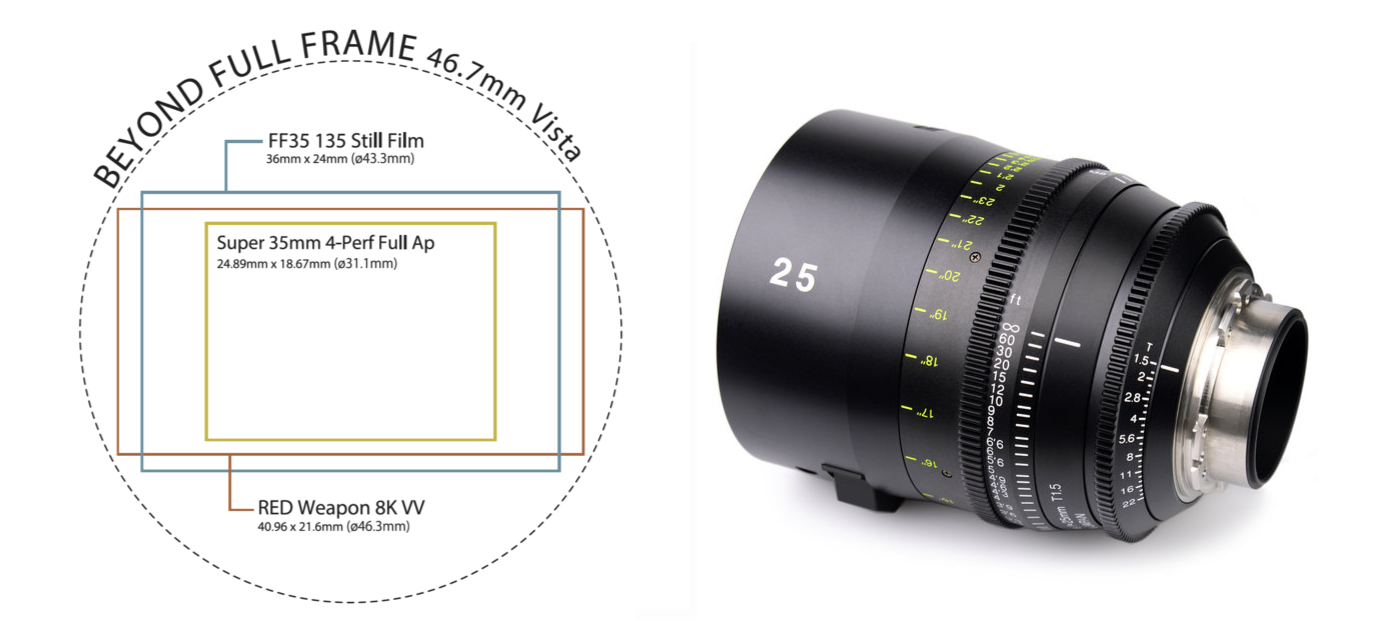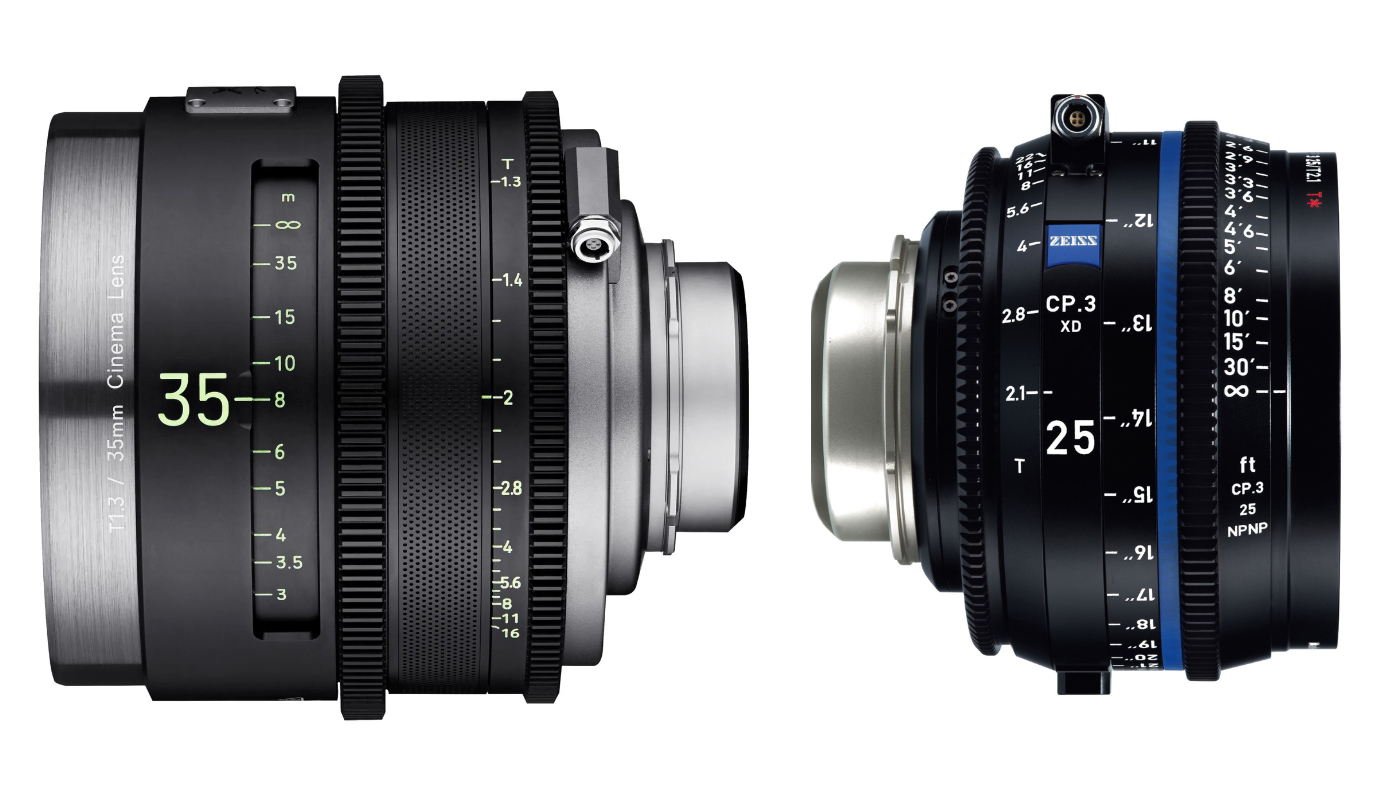We often spend the money best when investing in better quality lenses. There is a big difference between cheap and expensive glass. Especially the construction of good lenses makes a big difference. More on that later. Cine lenses are typically very expensive and heavy when compared to lenses used for regular photography. But why? There are several reasons why it’s a good idea to invest in a cinema lens. Here are a few of them in order of importance (my personal order):
- Image quality
- Focus
- Handling
- Aperture
- Size
- Build
- Price
Let’s look and each of those:
1. Image quality
First off, let me squash a myth about “The best lens” There is no “best lens”. The best lens is the one that fits the look and feel you want for your production. That might be a modern lens or an old vintage lens that gives you a special look. This article will focus on modern cinema lenses though.
Many will say that image quality is one of the big differences when choosing a cinema lens. But I’m not sure I agree. There aren’t really big differences between a good photography lens to a cinema lens if we look at sharpness, image quality. But when you go for a specific look, it’s a whole other question. Cinematographers will go for different cinema lenses for how they look. Contrast, sharpness, flares, aperture, etc. are important factors when they choose the right lens. Of course, when putting a +2-3000 Euros on the table for a cinema lens, you know that the glass and image quality is ok. All of the lenses in this article cover 8K, which means they are an investment also for future cameras, no matter if you have a Super 35, full frame or an even larger sensor. Below is the sensor coverage for the Tokina Vista primes:

2. Focus
With Cinema lenses you always have a very precise manual focus control and this is due to a long Focus Throw. This is a very important feature of most cinema lenses. In praxis, it means you have to turn the focus ring a lot to get from close focus to infinity focus. Ex. On the Tokina Vistas there is a 300-degree focus throw. It means you can do very precise focusing. A lot of modern photography lenses focus “by wire” which makes manual focus difficult.
When talking about focusing, we need to talk about Focus Breathing. Focus breathing is an issue that occurs across a wide range of lenses, and it can negatively affect your work in certain situations. Focus breathing, also sometimes called lens breathing, occurs when you shift focus from ex. close focus to infinity focus. When you do this on regular photography lenses, you will most often experience a change in field of view. The change is minimal if any at all on cinema lenses.
As mentioned above the clearly marked focus scales on both sides of the lenses are important when you work on the side of the camera, which camera assistants and focus pullers do. It’s critical that they can see the markings on either side of the lens. On many cinema lenses, the markings are made with a luminous font that glows in the dark enabling convenient verification and operation, even in darker environments.
3. Handling
When going for a cinema lens, handling is one of the very important factors. Lens diameter is often mentioned, because when on a bigger production, you often have cameras with matte boxes, and they need to sit tight on the lens, so no stray light comes through. So, with cinema lenses, you have the same diameter on all the lenses, 114mm to be exact. This means you can swing away the matte box and exchange the lens and swing it back, and everything fits.
The same goes for focus, aperture, and zoom gears on the lenses. They are placed in the same position on all the lenses, which again makes it easy and quick to switch lenses on set. The placement is very well illustrated in the below image from Tokina Cinema with their new Tokina Vista series. To switch lenses, turn any mounted follow focus, manual or remote controlled away, off with the mounted lens and new one in and swing back focus gear.

The gears on cinema lenses are industry standard. The industry standard translates to a 0.8 MOD, which refers to the spacing between the teeth of the gear wheel. This gear can be used for a manual follow focus, which often can be rigged with a follow focus whip which enables a person called a focus puller to do the focusing next to the camera operator. You can also mount a focus motor, which can be controlled from an attachment on the camera rig or remotely with the appropriate wireless gear. When using the focus whip, you see the reason for the clearly marked focus/iris/zoom scales on both sides of the lenses which I will come back to.

Xeen Anamorphic 50mm T2.3 rigged with remote-controlled focus and aperture motors on a Sony Venice cam.
Some lenses like the Xeen Meisters and the Zeiss CP.3 has enabled Lens Meta Data Recording, which enables cameras to automatically record the accurate lens meta data. This makes production and post-production more effectively. On the Xeen Meister (PL mount only) it’s the Cooke /i Technology protocol and on the Zeiss CP.3’s it’s called ZEISS eXtended Data (XD).

4. Aperture a.k.a. Iris
When talking about photography vs. cinema lenses, one big difference is T-stop vs. F-stop. On a cinema lens, it’s called T-stop (T = Transmission) and refers to the amount of light actually transmitted, whereas on the photography lens it’s called “F-stop” which strictly refers to the size of the opening in reference to the lens’s focal length.
Another distinction between the two types of lenses is the missing aperture ring on most modern photography lenses. The aperture is controlled via one of the camera dials, and on the cinema lenses, the aperture or Iris has its own industry-standard geared ring on the lens. The same standard is used on the focus ring and the zoom ring if it’s a zoom lens.
Btw. when you hear someone talk about lenses, you will hear photographers talk about the aperture, and filmmakers will talk about Iris. Those two are the same, so there is nothing to get confused over.
5. Size
As I mentioned under 2. Handling, the size matters. The size of the front of cinema lenses is often the same on all lenses, no matter which focal length. On the Xeen Meister and Tokina Cinema lenses mentioned further up in this article, the front diameter is a consistent 114mm.
6. Build
When buying a cinema lens, you often buy a lot of glass housed in a very solid casing. Most cinema lenses feel very sturdy and very high quality. And they are almost all of them.
Another advantage of cinema lenses is the mounts. In many cases, they have Interchangeable mounts incl. the very strong PL mount. This means that you can buy a lens set for one camera type and mount, and then switch the mount if you get another camera. If you don’t want to change the mount, you can use an adapter which will enable you to adapt to almost any mount possible.
7. Price
Prices range from a few thousand Euros for a set of Samyang Cine MKII 24, 35, 50, and 85mm T1.5, and +20.000 Euros for a set of 5 Zeiss CP.3 lenses to the Xeen Meisters which will set you back 8.500 Euros a piece just to mention a few options.
All in all, whether to get a cinema lens or a few of them is a matter of choice and the amount of money bank account and how much you want to spend.
I hope my article gave you a few insights into the world of cinema lenses. Your priorities might be different from mine. If you did enjoy my article, please do not hesitate to share it, or send me a message if you did like it or have comments about it.
And please, whether you have a photography or cinema lens, do go out and shoot!

